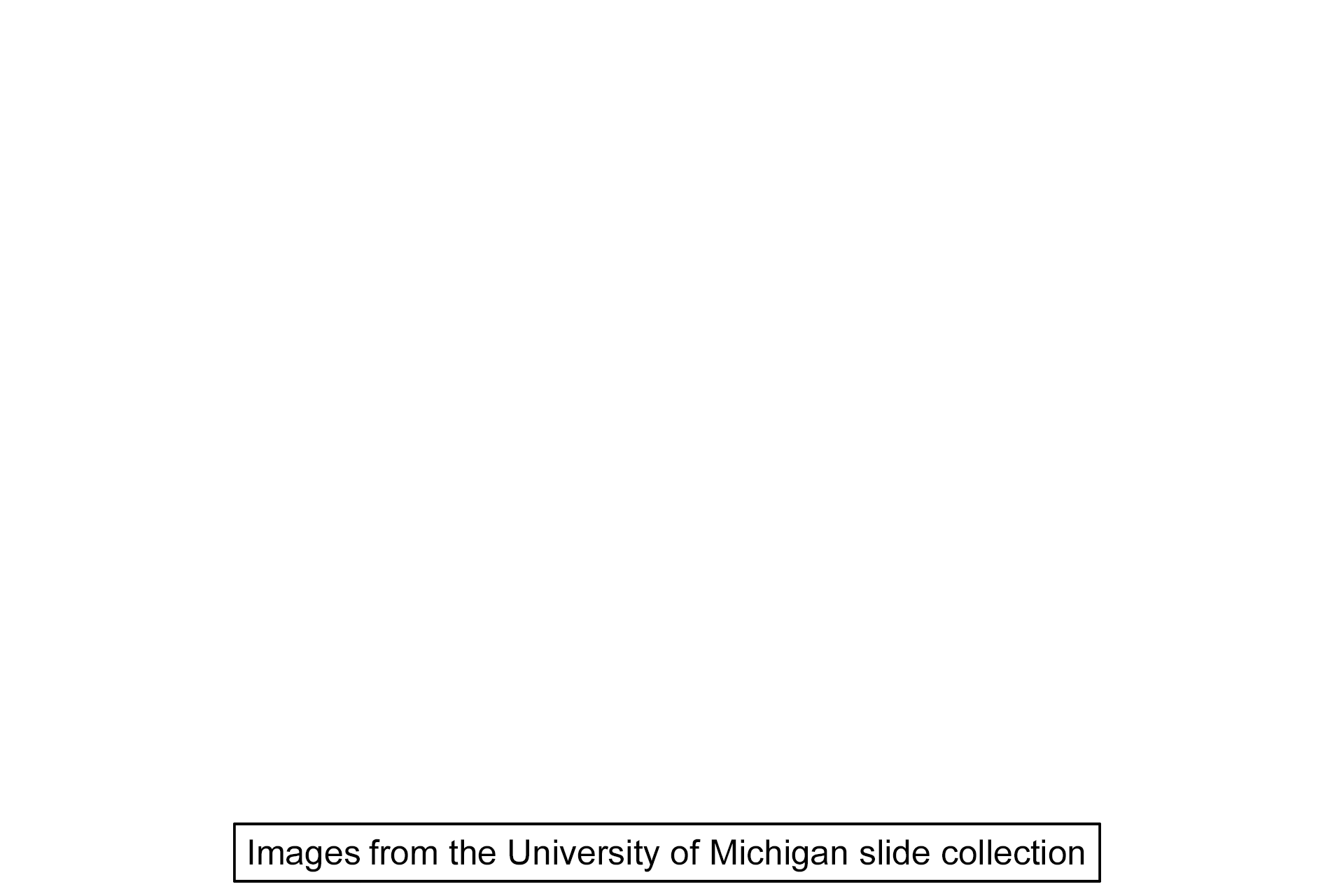
Root stage of tooth development
This image shows a developing tooth during the root stage, the final period in development. During this stage, enamel deposition ceases and cementum deposition begins. In addition, the eventual shape of the tooth root is determined. 10x

Gingiva >
The gingiva (commonly called the gums) has a masticatory mucosa, composed of a stratified squamous, moist orthokeratinized or parakeratinized epithelium with an underlying lamina propria of connective tissue.

Alveolar bone >
Alveolar bone forms the alveolus (tooth socket) and anchors the tooth via the periodontal ligament.

Enamel >
Enamel is produced by ameloblasts that secrete an organic matrix that quickly becomes mineralized with hydroxyapatite crystals of calcium phosphate. The demineralization process used during tissue preparation extracts these crystals and thus the region where enamel is located appears empty. The location of the enamel in life is indicated by the green shading.

Dentin >
Dentin is the first hard tissue deposited during tooth development and makes up the majority of the hard tissue of the tooth. Dentin is produced by odontoblasts, which, like ameloblasts, secrete an organic matrix that rapidly becomes mineralized with hydroxyapatite crystals.

Cementum >
Cementum, produced by cementoblasts, forms a thin layer of bone-like tissue extending from the cemento-enamel junction to cover the root of the tooth. Anchoring collagen fibers of the periodontal ligament, extend from the cementum to the alveolar bone to stabilized the tooth in its socket.

- Cemento-enamel junction
Cementum, produced by cementoblasts, forms a thin layer of bone-like tissue extending from the cemento-enamel junction to cover the root of the tooth. Anchoring collagen fibers of the periodontal ligament, extend from the cementum to the alveolar bone to stabilized the tooth in its socket.

Dental pulp organ >
At the root stage, the ectomesenchymal cells of the dental papillae have fully differentiated into the dental pulp organ. This tissue will form the dental pulp containing odontoblast cell bodies, nerves, and numerous blood vessels.

Apical foramen >
The apical foramen is the opening at the apex of the tooth root where the connective tissue of the pulp communicates with the connective tissue of the periodontal ligament allowing passage of blood vessels and nerves into the tooth.

Image source >
This image was taken of slide in the University of Michigan slide collection